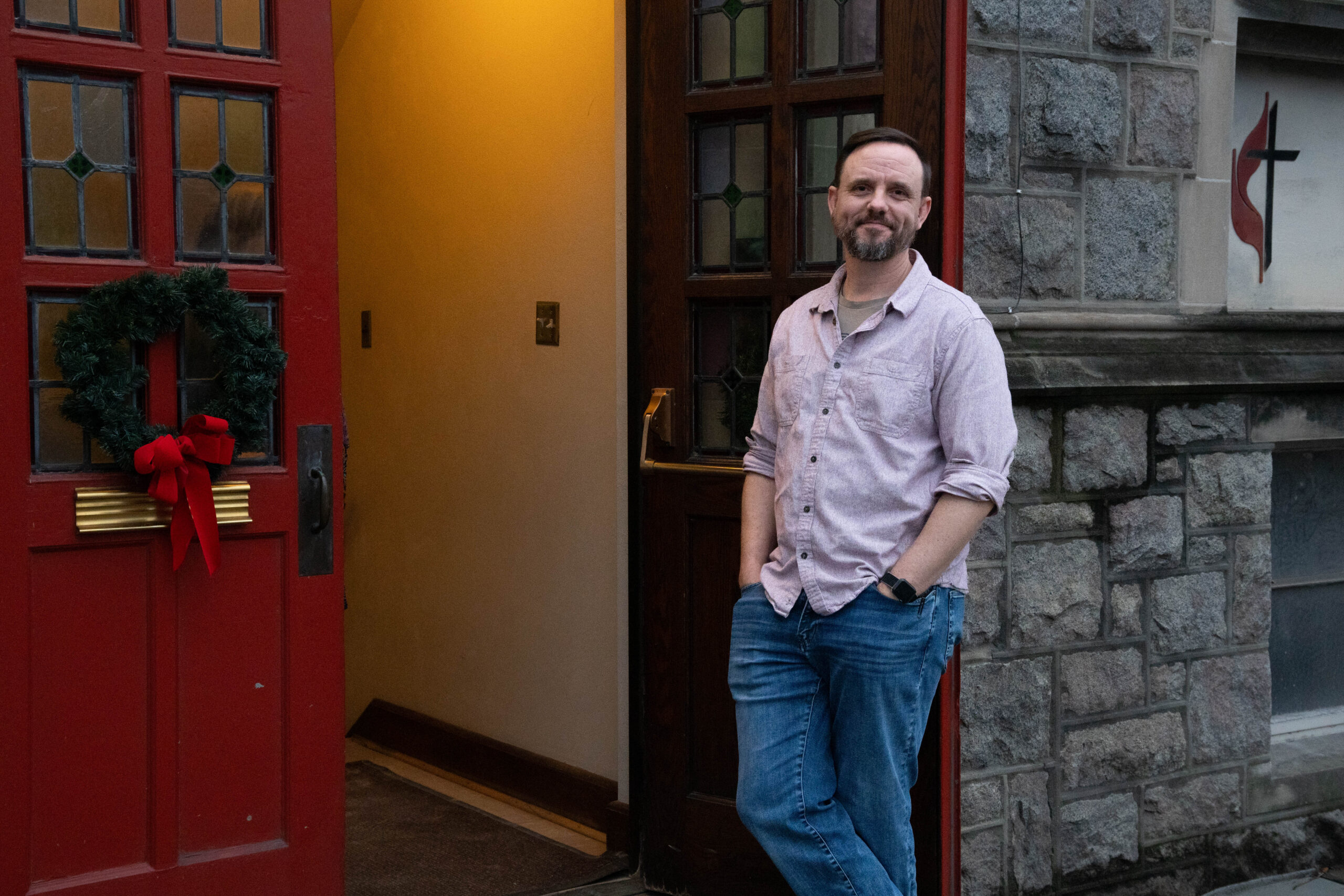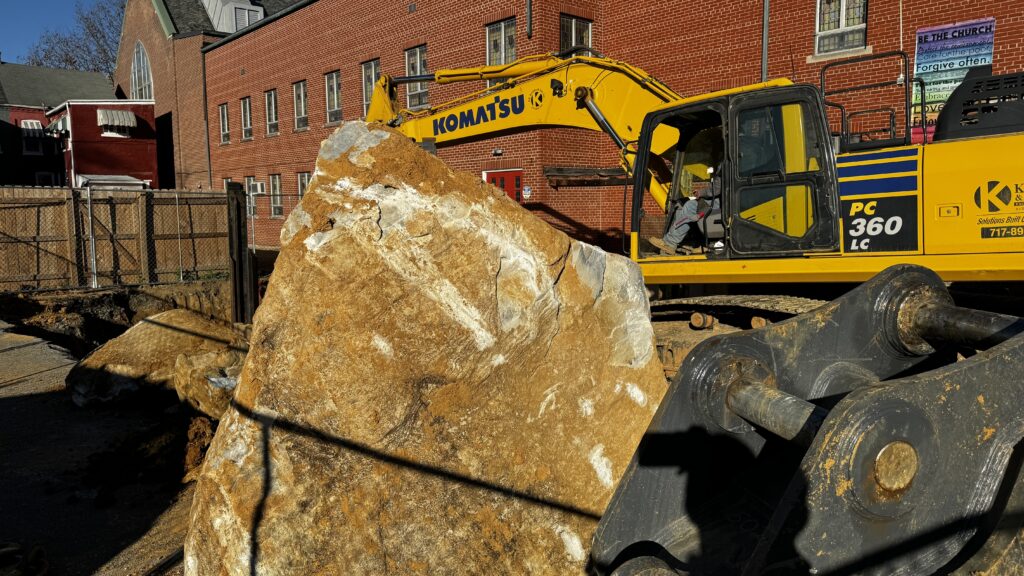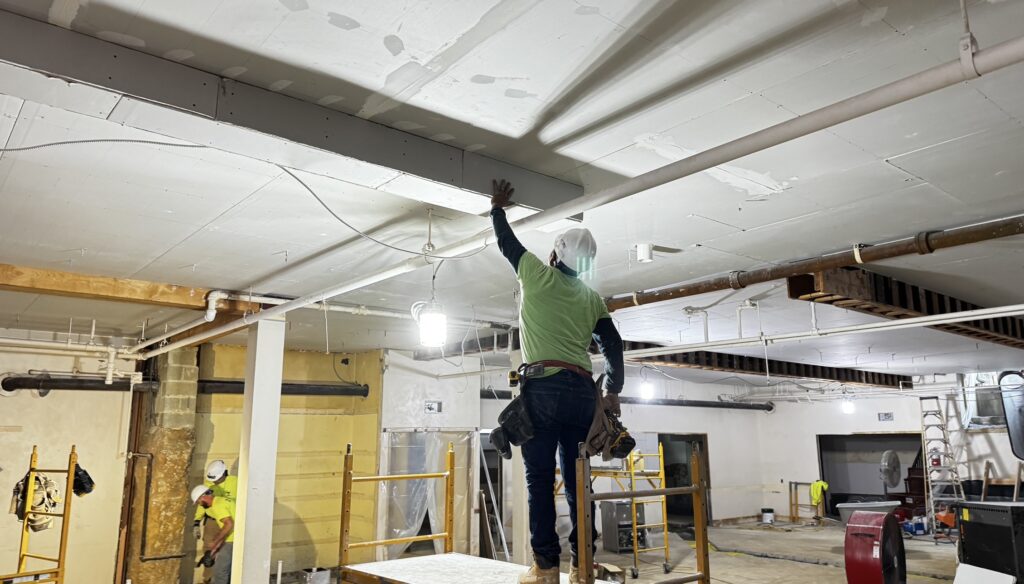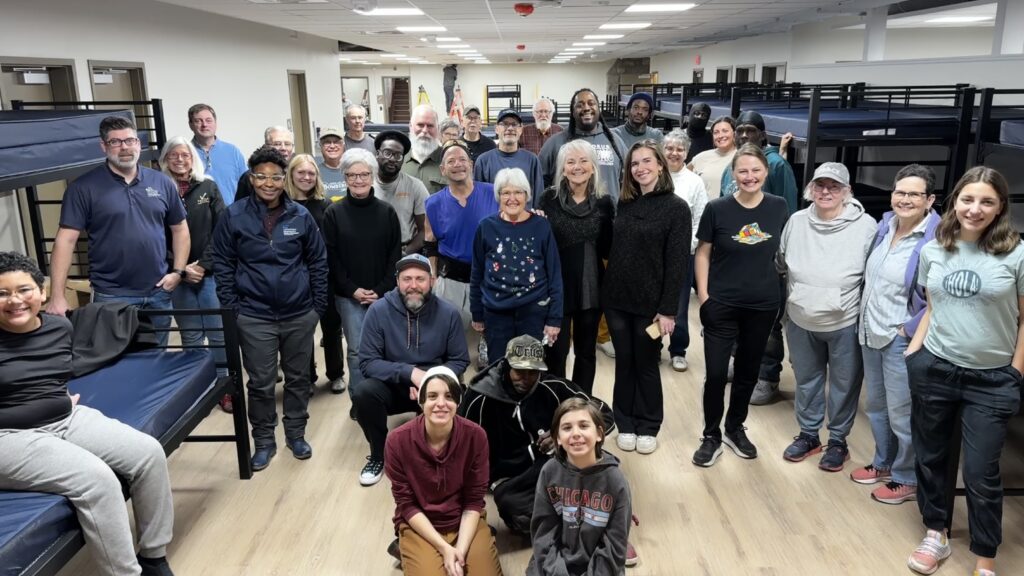
On December 30, 2024, Otterbein UMC in Lancaster opened its doors in a wide welcome to its unhoused neighbors.
The vision began when the Lancaster County Housing and Redevelopment Authority (LCHRA) was evaluating potential sites for a low-barrier homeless shelter. They contacted the church trustees to explore if this would be a possibility, who then passed it along to Rev. Jonette Gay, who carried the vision forward. Several months later, Otterbein UMC chose to walk the path of hospitality and self-sacrifice.
It was a big decision. Opening the shelter would mean rethinking ministry from top to bottom. Congregations often believe that church growth means having a children’s program, youth program, or small group ministry that meets at the church in the evening. Hosting the Clay Street Shelter would mean surrendering one-third of their building’s ministry space, every night from 7 p.m. to 7 a.m., to people they didn’t know, who might never pass through their doors into worship on a Sunday morning.
Rev. Gay led the church through that season of discernment—the congregation was on board and ready to allow the majority of their basement to be used by the shelter. When Rev. Gay was appointed to another church, she passed the torch to Rev. Chris Eden in July 2024, who would oversee the process of negotiating the lease agreement and managing construction. That task was far from simple.

Construction was already underway when LCHRA humbly asked, “Could we take your commercial kitchen and turn it into a laundry facility for shelter linens?” They estimated it would save the shelter $30,000 to $40,000 a year in operating costs.
Granting that request would mean surrendering the kitchen, which was something the church had to consider carefully. Rev. Eden tells the story: “The church, on a very short timetable, conducted an evaluation of ministry—how do we envision ministry in the future when we can’t cook? They decided, pretty much unanimously, to give over the space.”

Once again, Otterbein UMC chose radical hospitality and self-sacrifice. The LCHRA, in turn, set aside a smaller space that would be converted into a shared-use “catering kitchen” function as a catering kitchen, where church members could plug in crock pots and make sandwiches.
In fact, surrendering their space has opened up new conversations about how to use the rest of the building effectively. They’re now contemplating the question, “What would it look like to have a fellowship hall on the first floor?”
A Sprint to the Finish
Once those major conversations were sorted, the congregation and construction partners shifted into high gear. Trustees cleaned out the basement, the kitchen, and all the ancillary areas in July, hosting a community sale and discarding the rest. In August, the asbestos remediation began. At the beginning of December, when the bishop visited, the area was still under construction and no furniture had yet arrived.

But when God provides the vision, God also provides provision. Everything was in place by the soft opening on December 30th, and the shelter is now running at its maximum capacity. This is good news for the unhoused in Lancaster City, because in January, it was really, really cold.
Even then, the church went above and beyond. Rev. Chris Eden volunteers at the shelter and noticed that it took an hour and a half from the time people started lining up until they all made it inside the building. LCHRA director Justin Eby also noticed, and asked if the church could open up additional space so that everyone could wait inside the warm church building, rather than outside, on Code Blue days. The congregation didn’t hesitate. They prepared a space and scheduled nightly volunteers.
Rev. Eden is grateful to see the difference the shelter makes in the lives of the unhoused in Lancaster. “Watching them come in has been a joyful experience. They were freezing at 6:30 when the shelter was opening early. They thought they were going to be outside for another hour and a half. To see the look on their faces when they get to walk right into the church nursery and have a seat and warm up—it’s priceless.”

Partnerships Matter
Otterbein UMC didn’t do this on their own. It wasn’t even their idea. They said yes to opening their doors, and this strongly partnered mission is making a huge impact on the community. The YMCA knows how to run shelters, the LCHRA knows how to repurpose property, Otterbein UMC knows how to be good hosts and love people, and together they are making a difference.
It wasn’t only the community partnerships that mattered—conference partnerships also helped Otterbein UMC find their way on this journey. EPA’s conference trustees and attorney, Matthew Morley, helped them navigate lease agreements, consider insurance questions, and building use policies. DS Jenny Freymoyer also played a crucial role. “This project wouldn’t have happened if the conference wasn’t behind it and if Jenny wasn’t a resource,” remarked Rev. Eden. She helped him navigate the kitchen conversation, and her check-ins kept the ball rolling and the church moving forward.
Otterbein UMC is looking forward with hope to the next stage in their partnership with the Clay Street Shelter. They’re considering starting a Sunday morning gathering that would be timed just as the shelter is closing, so folks can go directly into a Bible study. They’re also working on ways to help multiply community generosity to the shelter, both financially and through volunteer hours.
If you’d like to get involved there are several ways you can make a difference in the life of the unhoused in Lancaster.
- You can give financially to support the Clay Street Shelter construction costs through the LCHRA website here.
- You can volunteer at the shelter through the YMCA Volunteer page: https://rosesymca.volunteermatters.org/project-catalog/83
- Or you can purchase items the shelter needs through its Amazon Wish List.
